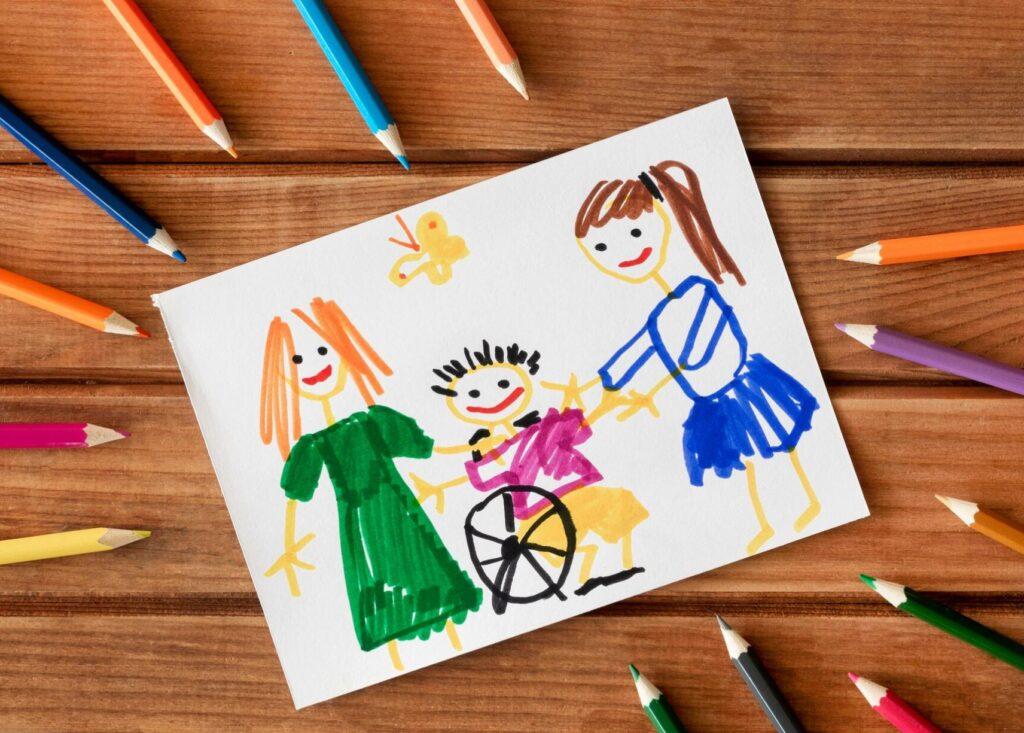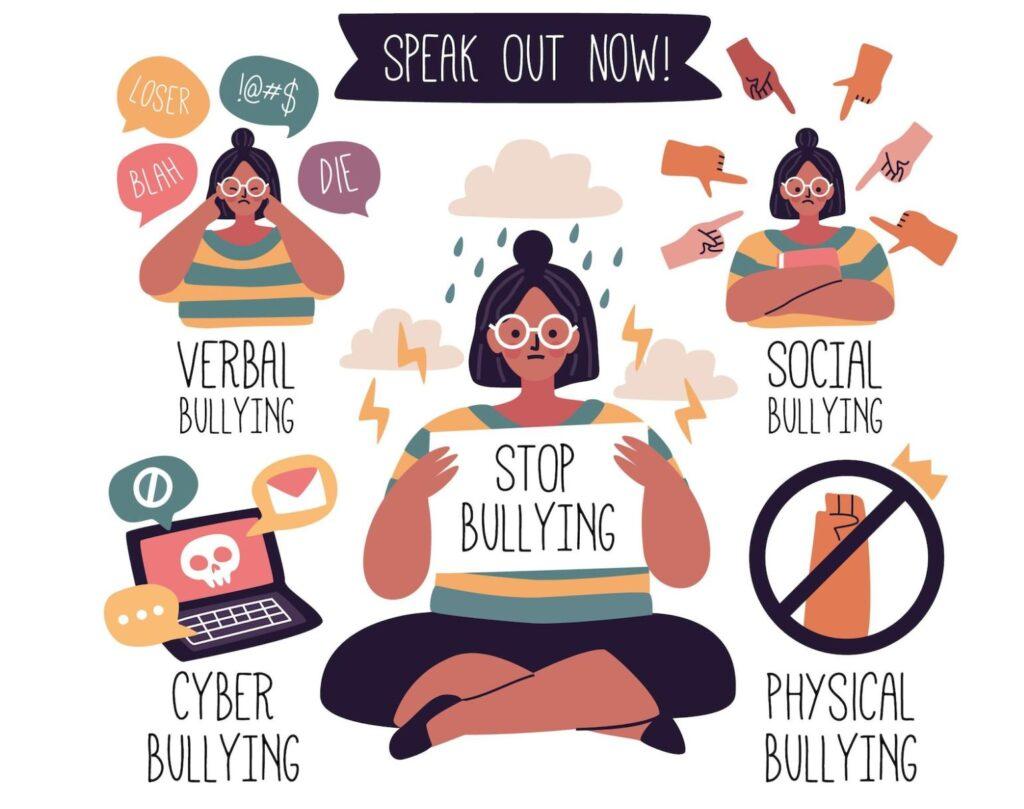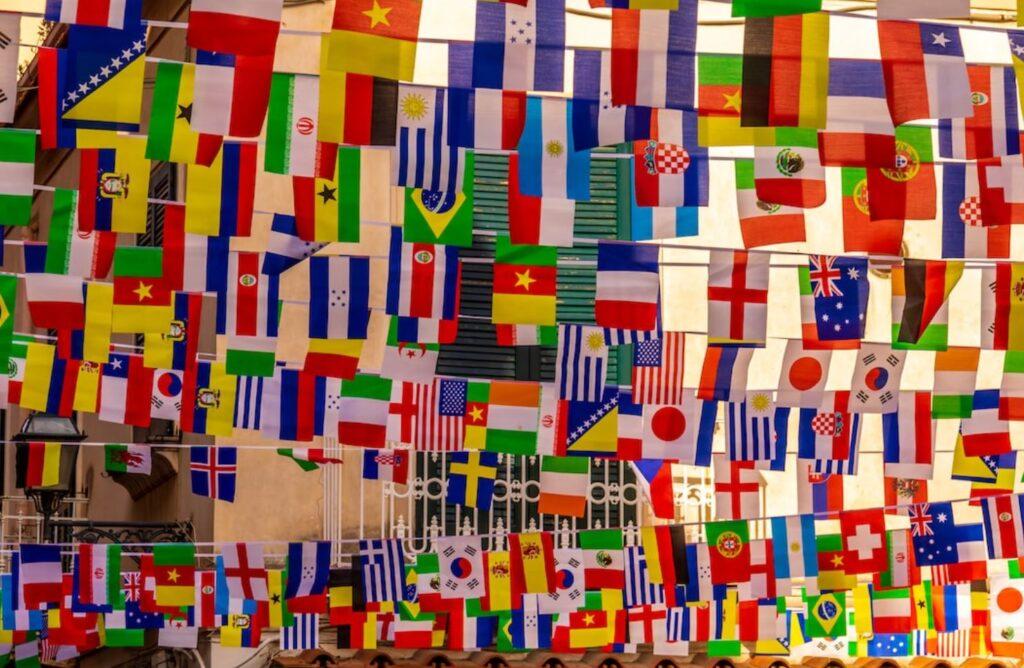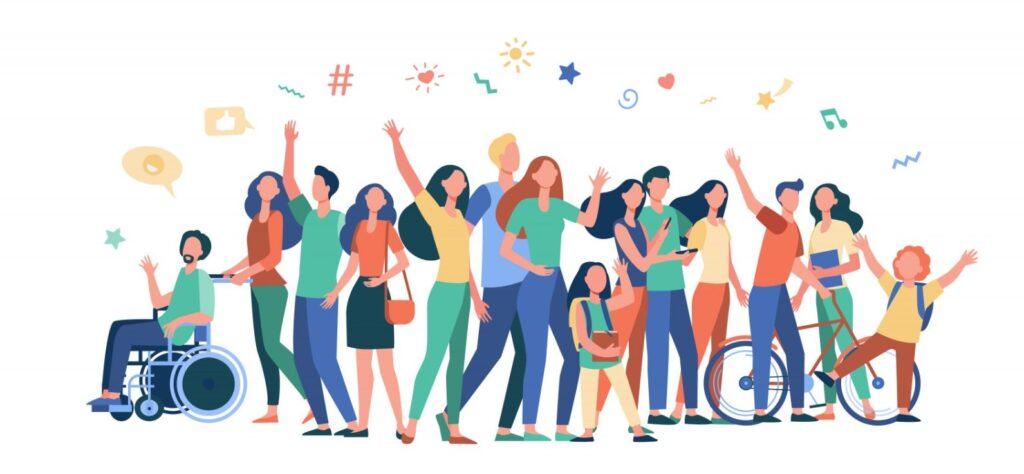It is human nature to find common and different points when we meet another person. Kids are easy to notice and express their curiosity about the difference, such as skin color, language, gender, disability, mental illness etc. It is very important to raise our kids with diversity and inclusion in mind, so they can treat each other equally and friendly. This article highlights 15 things that parents can do to raise kids to appreciate diversity between them and others, from why we need to be inclusive to activities you can do with your kids, teaching them about diversity and inclusivity. Meanwhile, we also listed 10 books for young kids. Hope you enjoy!
Related Reading:
- How to Talk and Teach Kids about Shaving (for Teen Boys and Girls)
- Talking About Birds and Bees (sex) to Your Kids: Tips for Every Parent
Table of Contents
What are Diversity and Inclusion?
In kids’ language, diversity means that everyone, including family and friends, is different in various aspects, from hair color, language, and food, to what we believe in. Inclusion is when we notice the difference, try to respect the other person’s choice, and are willing to understand where it comes from.
The Importance of Diversity and Inclusion
Raise kids with a diversity and inclusion mind can help them better understand themselves and their peers. It empowers kids to engage with the world with curiosity, confidence, and kindness. Diversity and inclusion make all children better learners by allowing them to comprehend various subjects from multiple perspectives.

Exclusion among Kids is Social Bullying
Among the four main types of bullying, physical, verbal, social, and cyber bullying, social bullying has the most effect on a child’s reputation, shaping their experience while they’re at school or events with their peers. Social bullying is to simultaneously put the victim down and bring him or herself up. One way to recognize students that are being victimized is to watch for changes in mood or social interaction. Children that are usually social but have started to avoid social scenes, especially peer-related events, and would rather spend time alone are likely to be bullied.
Related Reading:
- 10 Ways to Be an Upstanders in Bullying
- Prevent Kids from Bullying: A Complete Guide for Young Schoolers’ Parents (5 to 8 years)

12 Things Can Help to Raise Kids with Diversity and Inclusion in mind
1) Be a role model for kids to embracing inclusion and diversity
As adults’ behaviors heavily influence children, they require examples of people who accept differences and see them as a source of strength. The first step toward cultivating tolerance is to examine our prejudices. When you host a children’s party, a playdate, or volunteer at school, you should treat all children equally, regardless of their background or abilities. Use words that respect the child’s point of view: “I knew you were itching to jump on the trampoline. Let us wait for your turn.”

2) Choose a school and neighborhood for kids that embraces diversity and inclusion
Kids on the same street and primary schools are the first place kids experience different with others. Before you select primary school for your kids, search for the school background from public information. For example, what is the minority percentage, do they have an anti-bully policy, what is the school value, and have they organized events related to diversity, for example, celebrating other traditional holidays?
Related Reading:
- How to Keep Your Child Safe: 8 Pedophile (Child Molester) Warning Signs
- Room Parent Feedback – Parents Involvement in Primary School

3) Draw Self Portrait and Family Tree
Draw a self-portrait with kids, and describe each other’s similarities and differences and how the differences make each of us unique. It is a perfect opportunity to understand how our kids think about themselves and what they like and is proud of.
To achieve an honest and sincere embrace of diversity, children must first love themselves. Make a family tree with your children and learn about your ancestors. Giving them a sense of diversity in their own home will help them develop an appreciation for different cultures. Show them photos, explain their cultural background, and teach them to cook, dance, and play. It is part of their own heritage culture, emphasizing that it is also a part of our diverse world.
To achieve an honest and sincere embrace of diversity, children must first love themselves. Make a family tree with your children and learn about your ancestors. Giving them a sense of diversity in their own home will help them develop an appreciation for different cultures. Show them photos, explain their cultural background, and teach them to cook, dance, and play. It is part of their own heritage culture, emphasizing that it is also a part of our diverse world.
Related Reading:
4) Discuss Similarities
While discussing differences, it is also essential to highlight similarities. We are all human beings, and we all want to be loved, have dreams, make mistakes, and experienced joy and disappointment. Our backgrounds, appearances, or income do not define us, and it is far less important than how we treat others and the decisions we make.
5) Answer Kids’ Questions
It is an excellent opportunity for kids to ask relative questions. However, some questions can cause an awkward situation.
For example, point to someone and say, “mom, look, it is weird, why the guy does not has foot?” Instead of stigmatizing questions, teach children to ask them sensitively and appropriately.
For example, if you overhear a student remarking on something she notices about another classmate—”Why does he wear glasses?”—guide the two children in having a conversation about the difference. “Could you please tell us about your glasses?”
Provide honest answer that is age appropriate. If you don’t know the answer, you can say, “I need to think about your question and tell you the answer later.” Once you’ve gathered the necessary information, go back to your child and say, “Let’s talk about it.”
6) Do not Over React When Kids Say Improper Things in Public
This can be upsetting, but children frequently do not understand social norms and are unaware that they are acting impolitely. If needed, apologize on behalf of your children. Then respond simply and positively, such as “Yes, the world is a big place, and not everyone looks like you, and our differences make the world more interesting.” If necessary, provide more detailed information once you’re back in the car or at home. You should also teach your child that in public, asking questions about other people can be hurtful. “If you have a question, ask Mom or Dad later, and we’ll talk about it,”
Don’t react too strongly to their comments or questions and don’t dismiss it either. The key is to respond in a nonjudgmental manner. There are a few key phrases that will also help: “Let’s talk about it for a second…” “What made you say that?” Apologize for something they’ve said, and talk to your child privately about their language when appropriate.
7) Create Family Rules
When you hear prejudicial comments, verbalize your displeasure. Such as “That’s disrespectful” or “That’s a biased comment, and I don’t want to hear it.” Ask kids if they were excluded, “How would you feel? How do you think she feels? What could you do to make her feel better?”

8) Multicultural night
Engaging in multicultural experiences as a family could be fun for everyone. For example, make a night where you have dinner and play games from different countries. This is a fun way to get kids to learn about other cultures. Or host a music night where you and the kids will listen to songs from other countries. In addition, there is a diversity and inclusivity quiz. Assign basic questions about other cultures, flags, foods, and appropriate behavior toward others to the children. Make a night of it by awarding prizes.
Cooking is an engaging and delicious way to teach your children about diversity! Talk to them about these foods and why people in that country enjoy eating them. If possible, show your child a photo or a video that describes the dish and shows them people eating it.

9) Limit Screen Time
Stereotypes in the media are frequently subtle and developed over time and with repeated exposure. Understanding common everyday stereotyping is an important part of media consumption, try to limit the screen time. TV news may be a good source to discuss with kids about about current events at the dinner table.
Related Reading:
10) Build Self-Esteem and Empathy
Kids who have high self-esteem are more likely to accept others. Instead of following the crowd, they will stand up for what they believe to be right. Provide opportunities for your children to feel capable and competent. Demonstrate your love and appreciation for them through your words and actions. Empathy is the ability to notice others’ feelings and imagine what it would be like to be in their shoes or see things from their point of view. It is a cognitive skill that children can learn and develop.

11) Expose Children to Diverse Experiences and People
For children, exposure to a variety of experiences and people normalizes differences. It improves comprehension and eliminates the confusion, fear, or “otherness” that often leads to prejudice. Allow your child to participate in the following activities:
- Attend cultural events in your neighborhood and visit museums and cultural institutions.
- Encourage your children to interact with people from various backgrounds.
- Travel to new and different places if possible.
According to research, children who have a diverse set of friendships are more accepting of others and less likely to engage in bullying. They have already learned to get along with a variety of people. Encourage children to form meaningful friendships with new friends from school, sports, vacation, camp, musical events, and so on.

12) Empower Your Child
While it is important for your child to try to include everyone, you should also let them know that they are allowed to feel safe and valued in a friendship. In order to be inclusive, your child does not have to accept being physically or emotionally abused by another child.
Furthermore, if the relationship has proven to be hurtful and toxic, it is perfectly acceptable for your child to set boundaries with the individual.
It is even acceptable to set boundaries with children who have special needs. Just because a child has a disability does not give him the right to physically or emotionally harm your child. Your child should not feel obligated to do what the other child wants if it is not a mutual decision.
Related Reading:
8 Great Books for Young Kids to Encourage Diversity and Inclusion
- 8: Everywhere Babies Age 2-5
Written by Susan Meyers and Marla Frazee, this book is gentle and sensitive, and it takes a slightly humorous approach to multiculturalism. It’s approached in such a way that most kids will be able to understand it very quickly.

- 7: Giraffes Can’t Dance Age 3 and up
This book is a quirky story about a giraffe to teach kids the value of self-esteem and how it’s essential for everybody to always be themselves.

- 6: The Day You Begin Age 5-8
This one is great for kids who are starting school. The book goes over various topics, including race, family, and intelligence, and how it’s important to accept everyone for who they are and not judge people based on their appearance or abilities.

This is a Sesame Street book, and it explores how differences make us awesome, and despite our differences, we are all humans. This book is best suited for 4-8 year-olds.

This is an excellent book for children of all ages. It cleverly educates kids on guardians and how every family is different. It does this using clever rhyming and colorful illustrations, so kids will remember it.

- 3: Same, Same But Different Age 4-7
This story is about two pen pals who live 8,000 miles apart. It’s a story of differences, friendships, and understanding, and it teaches kids about different backgrounds.

- 2: The Colors of Us Age 4-8
The book tells a story of a young artist and her experience with race and skin color and how important it is to appreciate one another and be kind to people of all colors.

- 1: Don’t Call Me Special Age 4-7
It talks about various disabilities. They can still do the same things as everyone else. It’s an excellent book for kids to learn about judgment and understanding.

Final Thoughts from Pragmatic Lifestyle
Everyone is different, but we have many similarities. We are different in color, height, food, and many other things. But we are all human beings with feelings. Hope you enjoy the 12 things and 8 books that parents can do to raise kids to appreciate diversity and embrace inclusion in mind. See you next time!
About Me
Hi, there. I am Lin. Together with my husband and two kids, we live in the beautiful Netherlands in Europe. I am dedicated to self-development, creating quality time for the whole family, and fully supporting kids with their potentials and possibilities with all I have learned from engineering, MBA, and 10+ years of working experience in the energy sector.




3 Comments
Comments are closed.